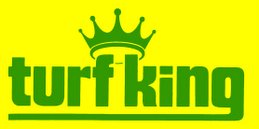Japanese beetles have become an annual nuisance in yards and gardens throughout the area. They are appearing on a variety of host plants and are likely to be around for the next four to six weeks.
Japanese beetles have several characteristics that make them significant plant pests. First, they are most active in mid-day in bright sunlight, usually in large numbers. Second, they have a very wide host range because more than 200 species of trees, shrubs and flowers have been documented as feeding targets. Favorites on the list seem to be linden, maples, crabapple, elm, grape and roses.
The other characteristic that makes them significant is their feeding habit. Adult beetles congregate on the outermost foliage in bright sun and consume tissue between the veins of the leaf. This damage is called skeltonizing. Leaves will turn a very visible brown and may drop.
Finally, these pests lay eggs in the soil that hatch into white grubs, potentially creating a concern for turfgrass damage later in August and September. Seeing beetles swarming now does not necessarily mean lots of grub damage later. There is still plenty of time before they turn their attention to lawns, so watch for details on white grub management next week.
In the meantime, what can one do to stop the beetles? Foliage damage can be lessened, but not eliminated, using insecticides such as carbaryl (Sevin), or products containing cyfluthrin (Tempo, Bayer Advanced Multiinsect Killer) or labeled insecticides containing pyrethroid. Read product labels carefully before purchasing or applying them. Treatment is most often suggested for smaller plants or new transplants, rather than large established trees. The earlier the better, so act as soon as beetles start feeding.
Research has shown Japanese beetle traps may draw more beetles into the area and not into the traps, so potentially, plant damage could increase. Another option on smaller plants is to hand pick the beetles off. Drop or sweep them into a container of soapy water.
• Send questions to Bruce Spangenberg, c/o the Features Department, Northwest Herald, P.O. Box 250, Crystal Lake, IL 60039-0250.
http://www.nwherald.com/columnists/columns/2009/07/17/r_qbxatmvvqq2fm6inkc2kzq/index.xml
Monday, July 20, 2009
Japanese beetles have become an annual nuisance
If you
have a lawn/tree/shrub that needs some Tender Loving Care- get The KING OF
GREEN:
or call
us at 905.318.6677 or 1.888.TURFKING (887.3546)
If you
would like more information, please Contact us
Follow
us on Twitter http://twitter.com/turfkingofgreen
Join our
Facebook page
Copyright 2009
Turf King-Hamilton. All Rights Reserved.
Labels:
grubs,
japanese beetle,
white grub
Subscribe to:
Post Comments (Atom)


No comments:
Post a Comment